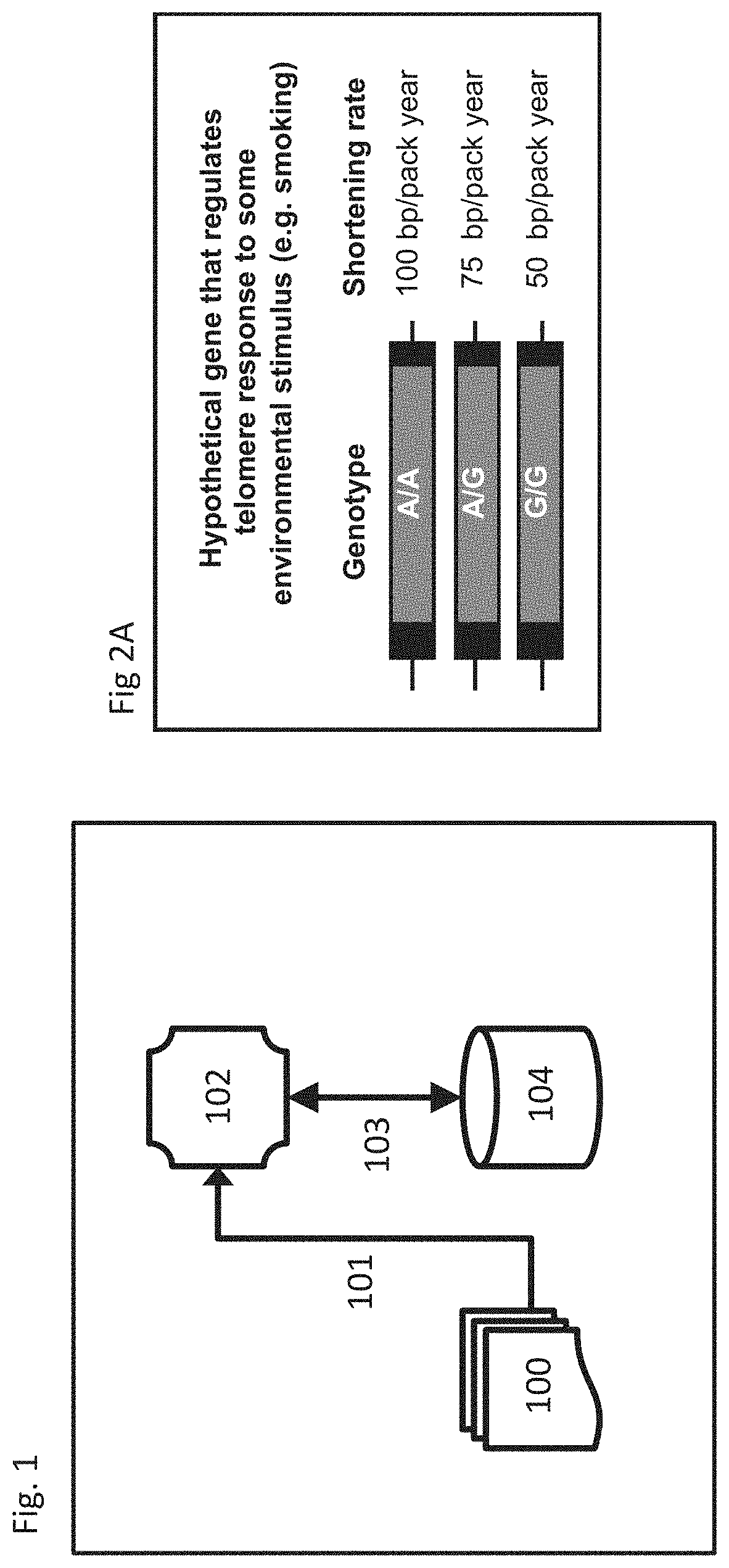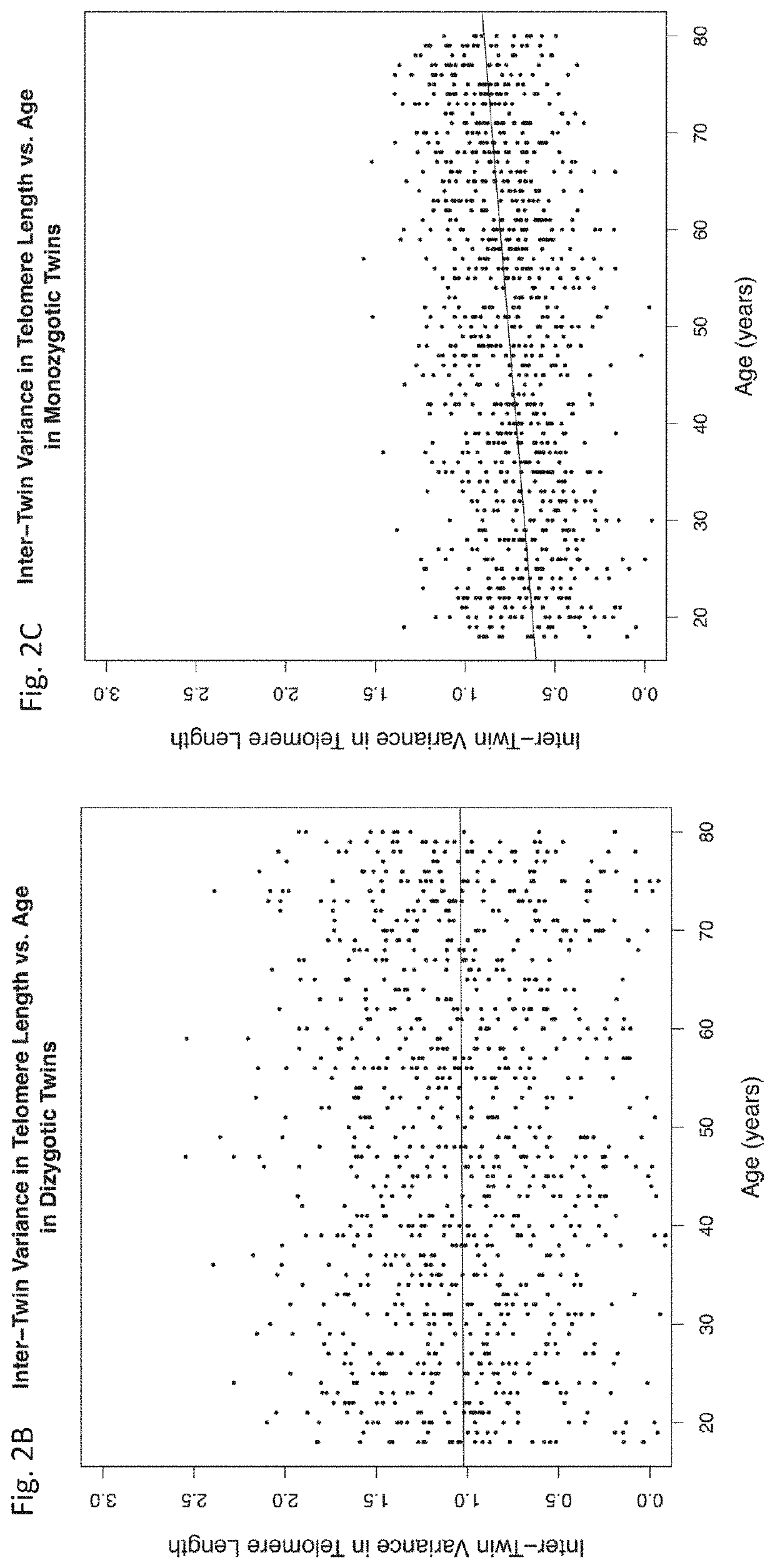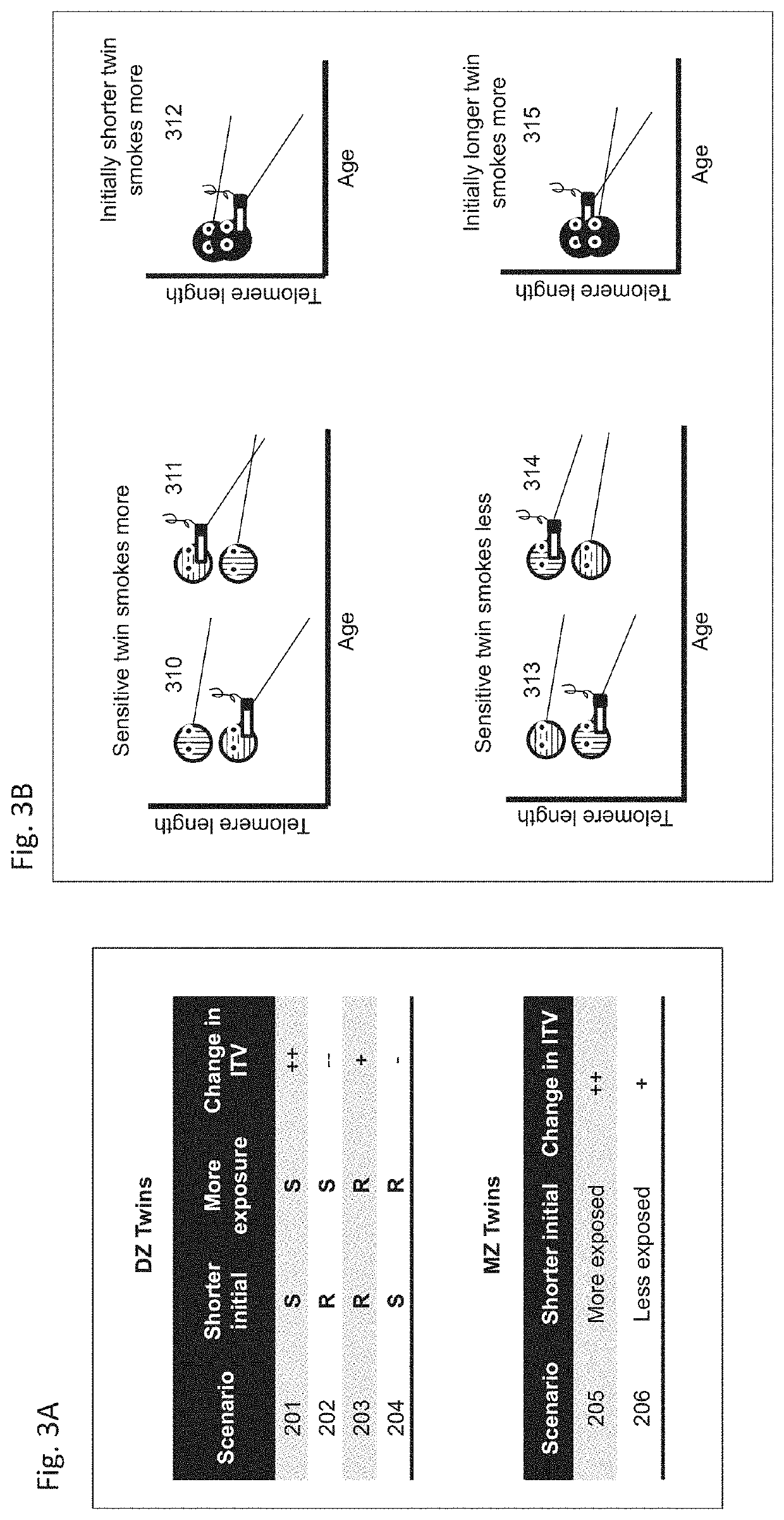System and method for discovery of gene-environment interactions
a gene-environment interaction and system technology, applied in the field of genetics, can solve the problems of sacrificing a great deal of statistical power for most uses, reducing the predictive power and reproducibility of the effect of the method, and a great deal of loss of dependencies
- Summary
- Abstract
- Description
- Claims
- Application Information
AI Technical Summary
Benefits of technology
Problems solved by technology
Method used
Image
Examples
Embodiment Construction
[0050]The described system and method allows discovery of Gene-Environment Interactions (GxEs) without the requirement to reduce phenotypes of interest to case / control status, which improves statistical power and removes a common source of user error. The binning required to perform case / control logic-dependent analyses throws away substantial information. For example, a dataset that includes BMI data about thousands of people stores that as a continuous variable with a distribution generally between 18 and −40; to use case / control logic one must reduce this distribution to a binary (obese or not obese) distribution, which dramatically reduces the information content of the data. The method does not require binning which is why this method has greater statistical power than previous methods.
[0051]The system and method uses, which is more useful for biological applications than the two variable analysis exemplified by Genome-Wide Association Studies (GWAS) and other modes of prior ar...
PUM
| Property | Measurement | Unit |
|---|---|---|
| distance | aaaaa | aaaaa |
| statistical power | aaaaa | aaaaa |
| degrees of freedom | aaaaa | aaaaa |
Abstract
Description
Claims
Application Information
 Login to View More
Login to View More - R&D
- Intellectual Property
- Life Sciences
- Materials
- Tech Scout
- Unparalleled Data Quality
- Higher Quality Content
- 60% Fewer Hallucinations
Browse by: Latest US Patents, China's latest patents, Technical Efficacy Thesaurus, Application Domain, Technology Topic, Popular Technical Reports.
© 2025 PatSnap. All rights reserved.Legal|Privacy policy|Modern Slavery Act Transparency Statement|Sitemap|About US| Contact US: help@patsnap.com



